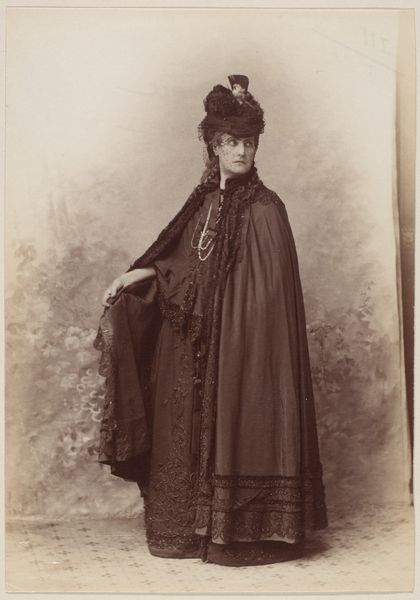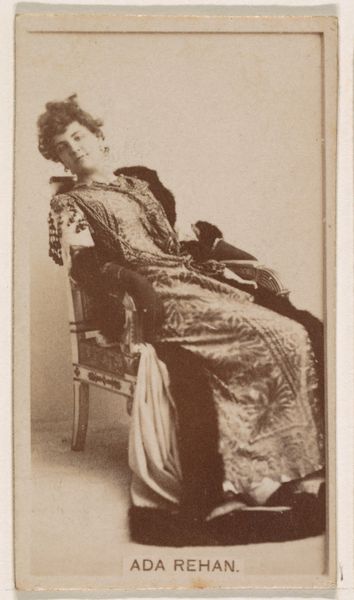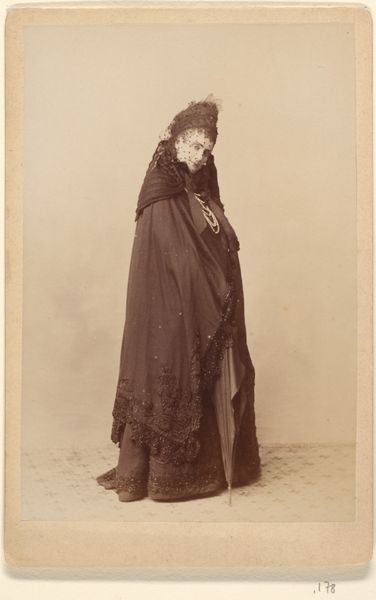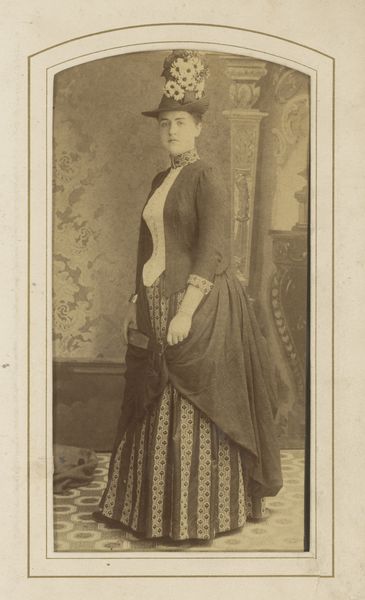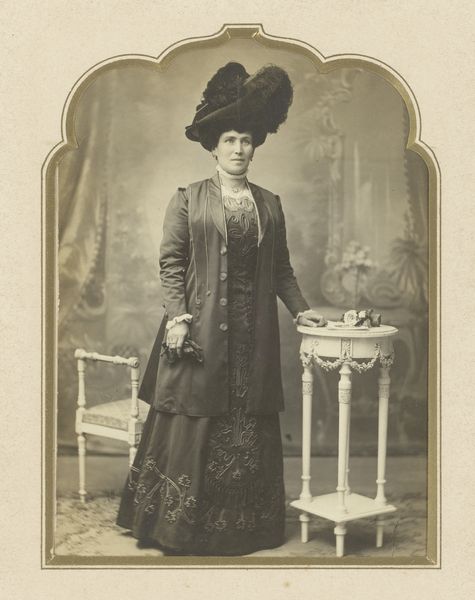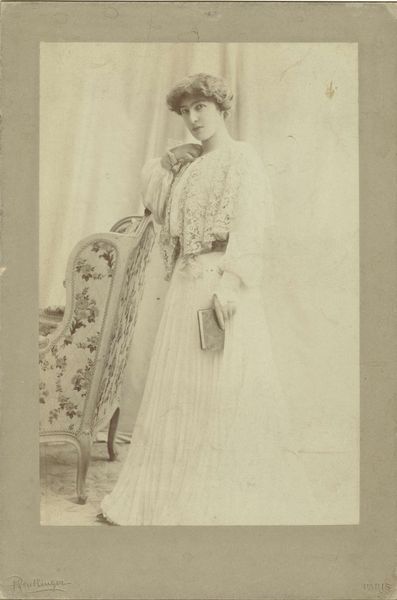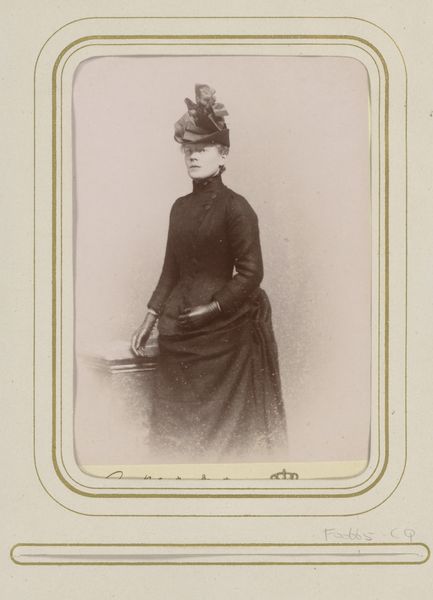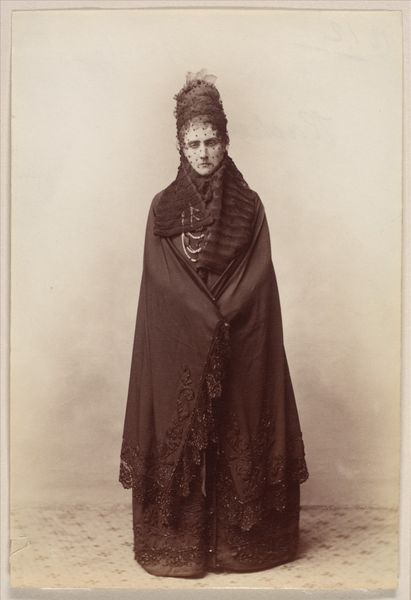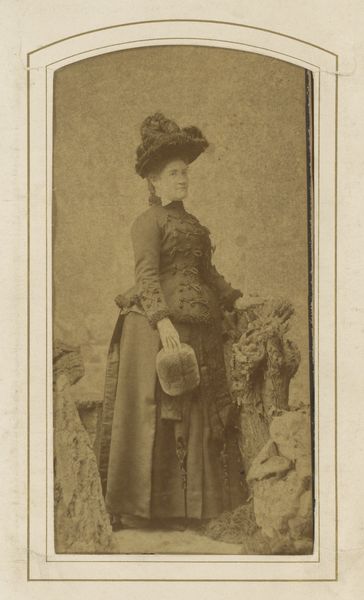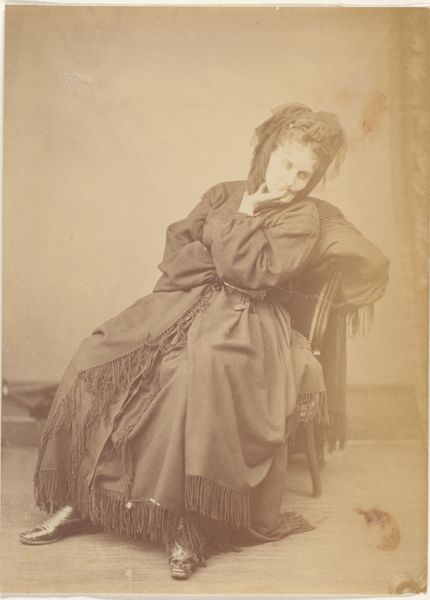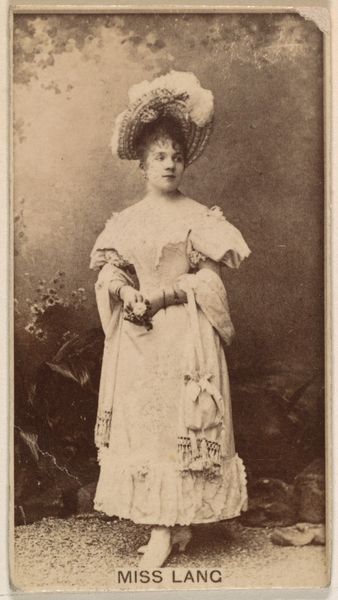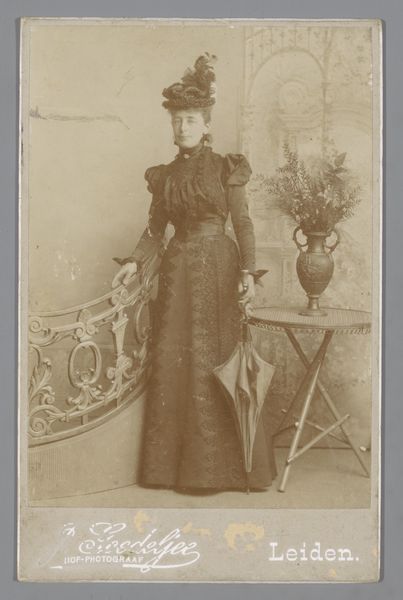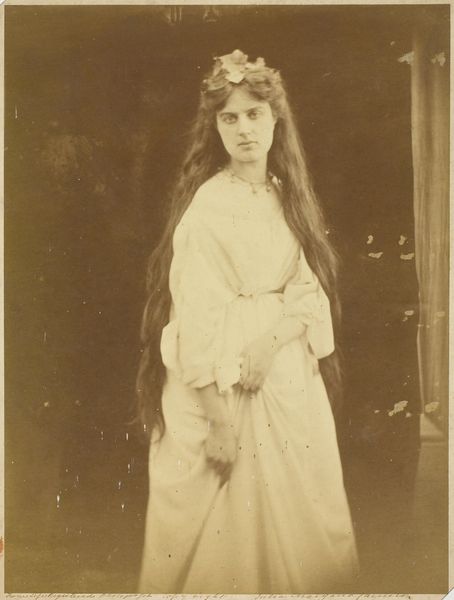
Dimensions: Image: 14.9 x 9.9 cm (5 7/8 x 3 7/8 in.) Mat: 59.8 x 49.8 cm (23 9/16 x 19 5/8 in.)
Copyright: Public Domain
Editor: Here we have Pierre-Louis Pierson's photograph, "Torino Aosta," created in 1893. The sepia tones lend a somber air to the woman's portrait, whose layered dress seems to almost merge into a single textured plane. How does it strike you? Curator: Structurally, I am drawn to the contrasting textures employed by Pierson. Note the delicate floral backdrop juxtaposed with the rich, almost brooding, materiality of the subject's clothing. This tension animates the photographic field. Do you see it as well? Editor: I do, now that you mention it. Is it just me, or do the folds in her dress suggest a movement frozen in time, adding dynamism? Curator: Precisely! The orchestration of light and shadow also creates an ambiguous surface; is it solid or porous? Furthermore, observe the layering of forms. How do these choices impact the semiotic reading of the photograph? Editor: So, the layering and textures aren't just decorative; they create depth, both literal and metaphorical, and the subject feels less like a person, more like an interesting pattern? Curator: Yes, the formal elements challenge us to question the very nature of representation. The picture plane becomes a site for visual and philosophical inquiry, as if probing identity itself. The work speaks of being a collection of textures rather than of emotions. Editor: It’s amazing how a photo that seemed straightforward can be so intricately layered and symbolic! I'll never look at historical portraits the same way again. Curator: Indeed. The formalism encourages this continuous questioning; one visual decision begets so many conceptual layers.
Comments
No comments
Be the first to comment and join the conversation on the ultimate creative platform.
